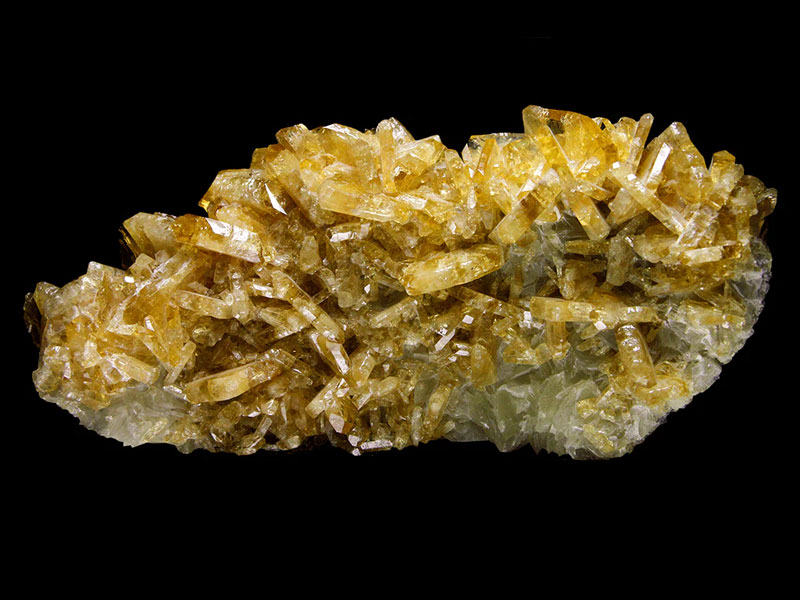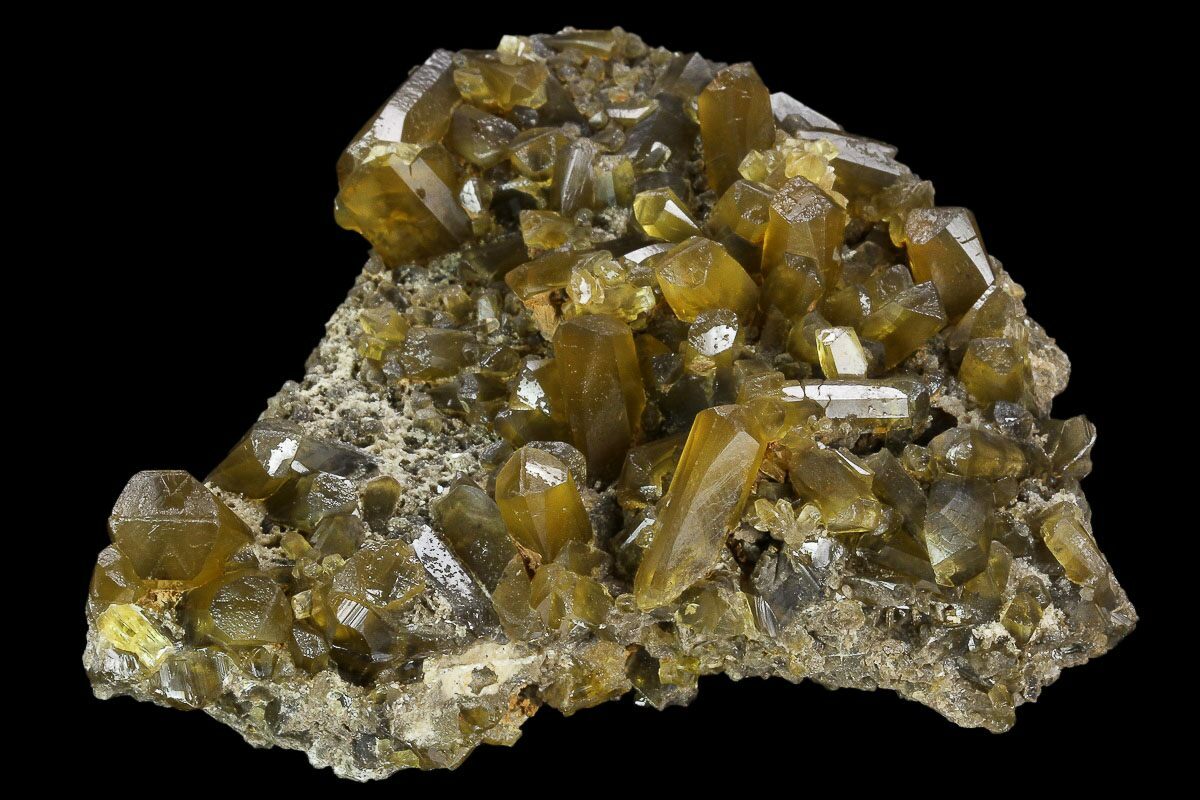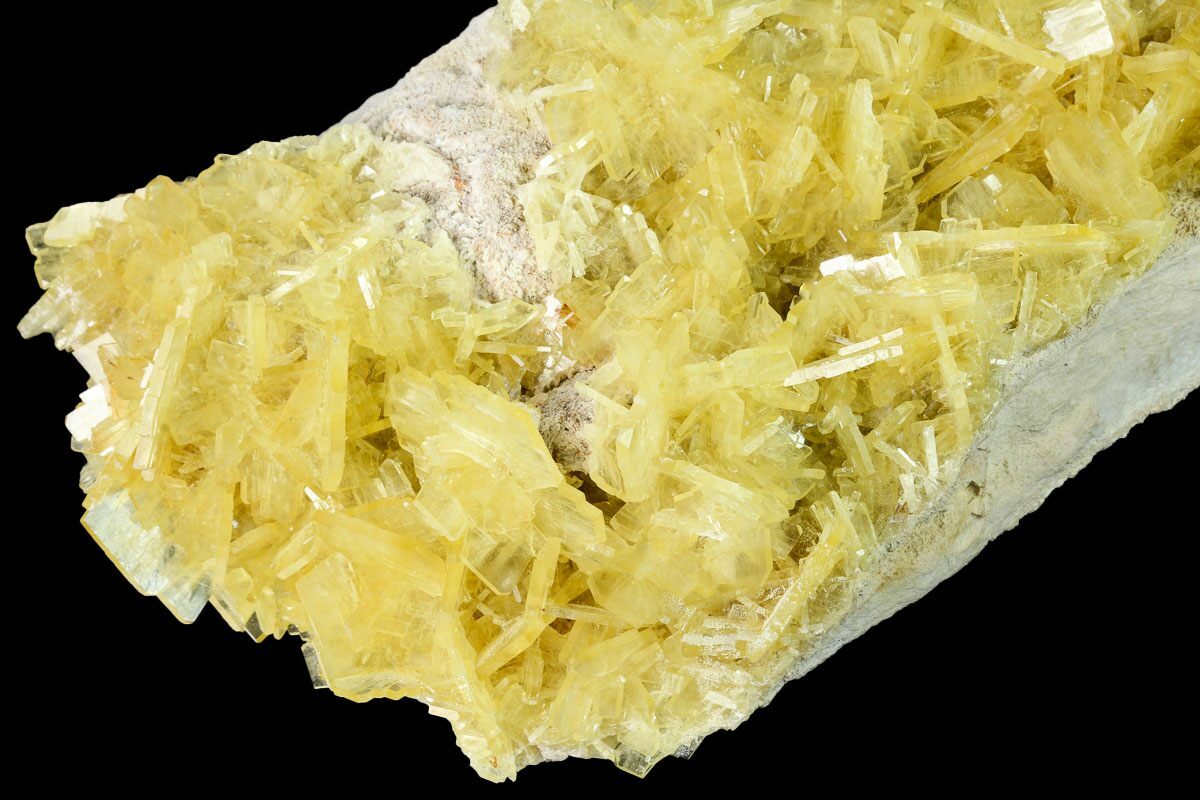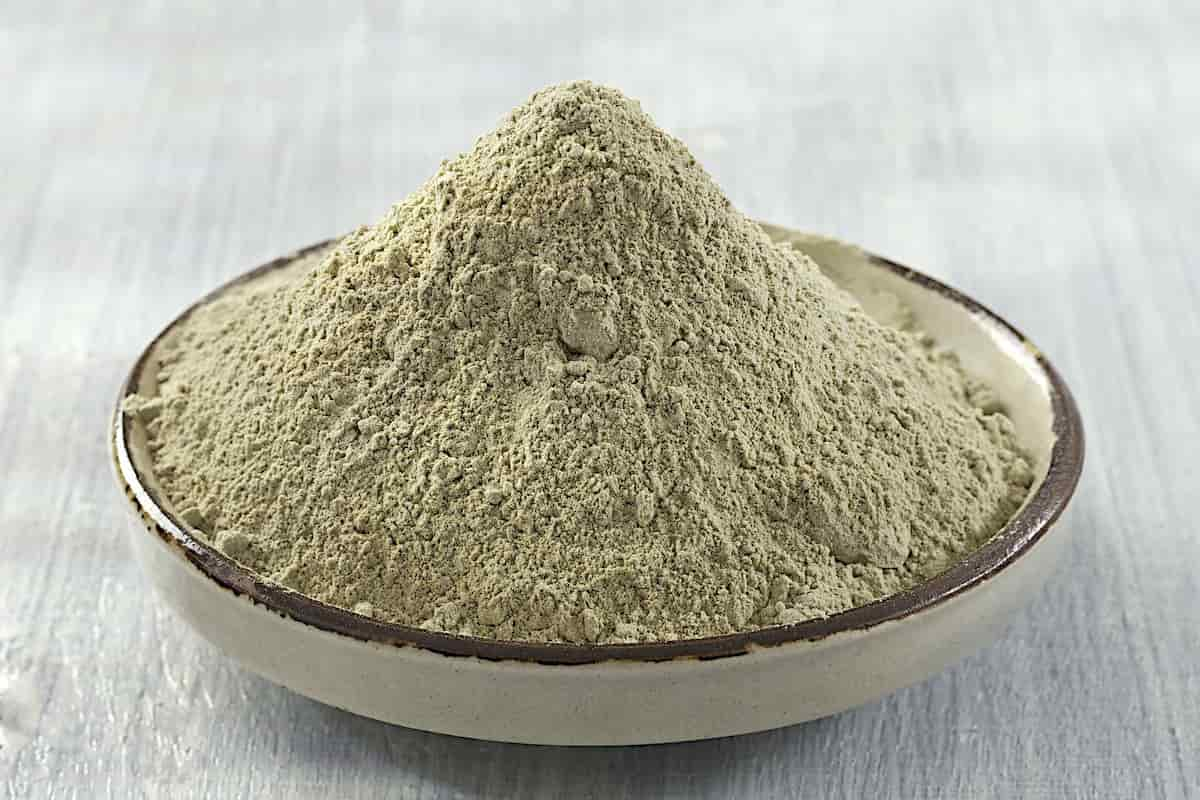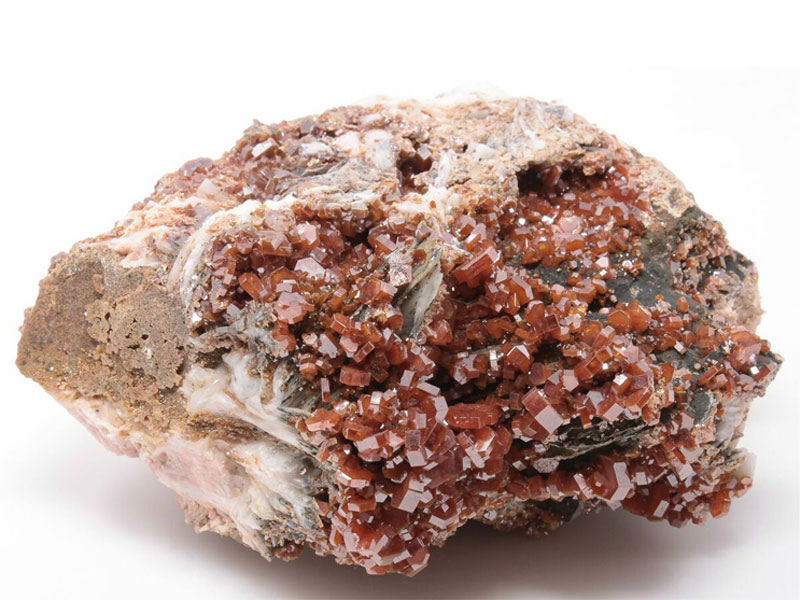what is yellow barite ?
Yellow Barite, also known as “Yellow Baryte,” is a naturally occurring mineral composed primarily of barium sulfate (BaSO₄). Barite is generally colorless or white, but it can occur in shades of yellow, depending on the impurities and trace elements present in its structure. Yellow Barite is particularly valued in several industries for its unique physical properties and wide-ranging applications. before that you must read about what is barite
In this article of vornaco, we will delve into the characteristics, uses, and importance of Yellow Barite in various industrial applications.
Barite is a mineral that forms in sedimentary rocks and is often found in veins or as a gangue mineral in metallic ore deposits. It is known for its high specific gravity (4.3 to 4.5) and low solubility. When yellow impurities, such as iron, are incorporated into its crystalline structure, Barite takes on a yellow hue. This variation in color does not affect its inherent qualities but adds to its aesthetic appeal.
Yellow Barite is a form of Barite that has become popular due to its distinct yellow coloration, which makes it stand out from the more commonly encountered white or colorless varieties. It can be found in various regions around the world, including the United States, China, and Morocco.
you can see more minerals like Kaolin for Dogs Pets at Home
Geological Formation
Yellow barite owes its vibrant color to specific geological processes. These processes, often involving the interaction of minerals and sediments over time, contribute to the formation of this distinctive mineral. Yellow barite is characterized by its crystalline structure and high purity, making it sought after for numerous applications.
-
High Specific Gravity: Barite is well-known for its high specific gravity, making it useful in applications where density is critical.
-
Chemical Stability: It is chemically inert, which makes it resistant to weathering and chemical reactions in various environments.
-
Color and Aesthetic Appeal: The bright yellow color of this variant enhances its visual appeal, which makes it a favorite in decorative and ornamental uses.
-
Crystalline Structure: Yellow Barite crystallizes in the orthorhombic system, giving it a characteristic appearance.
-
Non-toxic: Barite in general is considered non-toxic, making it safe to handle in industrial settings.
Uses of Yellow Barite
Yellow Barite is primarily utilized in the following industries:
Oil and Gas Industry:
-
-
Drilling Fluids: One of the most significant uses of Barite, including Yellow Barite, is in the oil and gas industry, where it is used as a weighting agent in drilling fluids. The high specific gravity of Yellow Barite makes it an effective additive to control the pressure during drilling operations.
-
Mud Weighting: Barite is added to drilling mud to increase the density, which helps prevent blowouts and ensures the safe extraction of oil and gas.
-
Yellow barite plays a crucial role in the oil and gas sector, particularly in drilling operations. Its density and chemical inertness make it an ideal component in drilling muds, aiding in wellbore stability and preventing blowouts. As the energy industry continues to expand, the demand for yellow barite in drilling applications is on the rise.
Paint and Coatings:
-
-
Pigment in Paints: Due to its yellow hue, Yellow Barite is sometimes used as a pigment in the production of paints and coatings. It helps in providing a vibrant color and enhances the durability of the paint.
-
UV Protection: Yellow Barite can help improve the UV resistance of coatings, making it suitable for outdoor applications.
-
In the realm of colors, yellow barite takes center stage. Its vibrant yellow hue, coupled with its opacity and chemical stability, makes it a prized ingredient in the paint and pigment industry. From vivid yellows to subtle pastels, yellow barite contributes to a spectrum of colors, enhancing the visual appeal of various products.
Ceramics and Glass Manufacturing:
Barite is used in the production of ceramic materials and glass, where it acts as a flux, reducing the melting temperature of other components.
The high density of Barite is beneficial in the glass industry, where it contributes to the strength and clarity of glass products.
Medical and Radiology:
-
-
-
Barium Sulfate in Medical Imaging: Yellow Barite contains barium sulfate, which is widely used in medical imaging, specifically in X-ray and CT scans for barium meals and gastrointestinal studies.
-
Radiation Shielding: Due to its high density, Barite is used in radiation shielding materials, helping to block harmful radiation in medical and industrial applications.
-
-
Yellow barite’s unique properties extend beyond traditional industries. In medicine, it is gaining attention for its use in diagnostic imaging. Its ability to block X-rays makes it valuable in enhancing the visibility of certain tissues during medical procedures. As technology advances, the medical applications of yellow barite are expected to broaden.
Construction and Civil Engineering:
-
-
Building Materials: Yellow Barite can be added to concrete and other construction materials to enhance the density and strength of the final product. It helps in providing additional weight to materials that need to withstand high pressure or provide shielding against radiation.
-
Barite Concrete: This form of concrete, often called “Barite concrete,” is used in nuclear power plants and medical facilities to provide radiation protection.
-
Environmental Impact of Yellow Barite
The environmental impact of Yellow Barite, like many other minerals, is significant, particularly in the extraction process. While Yellow Barite itself is a non-toxic mineral, the mining and processing of Barite can cause environmental concerns if not properly managed.
-
Habitat Disruption: Mining activities, especially open-pit mining, can lead to the destruction of habitats and ecosystems in the areas surrounding Barite deposits. This can negatively affect local wildlife and plant life, particularly in regions that have not been properly rehabilitated after mining operations.
-
Water Contamination: During the extraction process, chemicals and heavy metals may be used, which can potentially leak into nearby water sources. This contamination can pose a risk to aquatic ecosystems and affect the quality of drinking water for surrounding communities.
-
Air Pollution: The dust generated during the mining and transportation of Barite can contribute to air pollution, impacting both the environment and the health of workers and nearby communities.
-
Energy Consumption: Mining operations require significant amounts of energy for extraction, transportation, and processing, which can contribute to the carbon footprint of Barite production, further impacting climate change.
However, when mining operations are managed sustainably and with proper environmental safeguards, the impact can be minimized. Companies are increasingly adopting best practices for land reclamation and minimizing waste to mitigate the environmental effects of Barite mining.
Mining and Extraction of Yellow Barite
The extraction of Yellow Barite involves several key steps that are essential for obtaining the mineral in a usable form.
-
Location of Deposits: Yellow Barite is typically found in sedimentary deposits, often in association with other minerals such as galena, sphalerite, or fluorite. Large Barite reserves are found in regions such as the United States, China, and Morocco.
-
Mining Methods: The most common method for extracting Barite is open-pit mining, although in some cases, underground mining may be employed if the deposits are deep. Open-pit mining involves removing large amounts of overburden (soil and rock) to reach the Barite ore.
-
Processing: After extraction, the Barite ore is transported to processing plants, where it is crushed and purified to remove impurities. The color and purity of Yellow Barite can be influenced by the presence of iron and other trace elements, which affect the final product’s quality and appearance.
-
Challenges in Extraction: The extraction process can be challenging due to the need for careful handling of the ore to preserve its unique properties. In addition, the economic viability of Barite extraction is influenced by market demand, extraction costs, and regulatory requirements regarding environmental protection.
-
Sustainability Efforts: To minimize the impact of Barite mining, companies are adopting more sustainable practices. These include reducing energy consumption, using environmentally friendly extraction techniques, and rehabilitating mining sites after extraction to restore the landscape and ecosystems.
read more about : what does kaolin clay do in soap
Advantages of Yellow Barite
-
High Specific Gravity:
-
One of the major advantages of Yellow Barite is its high specific gravity, which makes it an excellent weighting agent in drilling fluids, especially in the oil and gas industry. This high density helps prevent blowouts by controlling the pressure during drilling operations.
-
-
Chemical Stability:
-
Yellow Barite is chemically inert and stable, meaning it does not react easily with other chemicals or environmental factors. This property makes it suitable for use in harsh conditions, such as deep-sea drilling or in highly reactive environments.
-
-
Versatility in Applications:
-
Yellow Barite has a broad range of applications beyond drilling. It is used in the paint industry as a pigment due to its vibrant yellow color, in ceramics to improve product durability, and in radiation shielding for medical and industrial purposes.
-
-
Non-toxic:
-
Yellow Barite is considered non-toxic, making it safe to handle in most industrial applications. This is particularly important in the oil and gas sector, where safety standards are crucial.
-
-
Aesthetic Appeal:
-
The vibrant yellow hue of Yellow Barite makes it attractive for use in decorative and ornamental items. It is sometimes used in jewelry or as a part of artistic displays, providing both functionality and visual appeal.
-
-
Sustainability:
-
When mined and processed responsibly, Yellow Barite is a relatively environmentally friendly mineral compared to other industrial materials. Its use in radiation shielding, for example, helps reduce exposure to harmful radiation in medical settings.
-
read more about red barite on vornaco.
Challenges of Yellow Barite
-
Environmental Impact of Mining:
-
Like many minerals, the mining and extraction of Yellow Barite can lead to environmental degradation. This includes habitat disruption, water contamination, and air pollution from dust generated during the extraction and transportation processes.
-
-
Limited Sources:
-
Yellow Barite is not as abundant as other forms of Barite, and its specific yellow color is caused by impurities, making it rarer and sometimes more expensive than standard Barite. The limited availability of high-quality Yellow Barite can lead to supply chain challenges.
-
-
Processing Costs:
-
The extraction and processing of Yellow Barite require careful handling to preserve its color and purity. This process can be more costly than the standard Barite extraction, as it often involves additional purification steps to ensure the desired appearance and properties.
-
-
Market Price Fluctuations:
-
The price of Yellow Barite can be volatile, as it is influenced by global demand, especially in industries such as oil drilling and paint manufacturing. Any fluctuations in these sectors can directly impact the price and availability of Yellow Barite.
-
-
Competition from Synthetic Alternatives:
-
In some applications, such as pigments in paint, Yellow Barite faces competition from synthetic alternatives. These synthetic substitutes can sometimes offer more consistent color and cheaper production costs, making Yellow Barite less competitive in certain markets.
-
-
Health and Safety Risks During Mining:
-
While Yellow Barite itself is non-toxic, the mining process can pose health risks to workers, especially in the presence of dust and other hazardous substances. Proper safety protocols and protective equipment are necessary to mitigate these risks.
-
Market Trends of Yellow Barite
-
Rising Demand in Oil and Gas Industry:
-
One of the most significant trends in the market for Yellow Barite is its growing demand in the oil and gas industry. As global exploration and drilling activities continue to rise, the need for high-quality Barite, including Yellow Barite, as a weighting agent in drilling fluids is increasing. The global push for more oil and gas exploration, especially in challenging environments, continues to boost the market for Yellow Barite.
-
-
Increasing Use in Radiation Shielding:
-
Another emerging trend is the increased use of Yellow Barite in radiation shielding applications, particularly in medical and industrial fields. As the demand for more advanced medical imaging and nuclear power grows, the need for Barite in radiation protection is expanding. Yellow Barite’s high density makes it an excellent material for shielding against harmful radiation, further increasing its market demand.
-
-
Growth of the Construction Industry:
-
Yellow Barite is also seeing an increase in demand in the construction industry. It is used in Barite concrete, which is essential for creating radiation-shielding barriers in medical facilities, nuclear power plants, and other specialized construction projects. As infrastructure development grows globally, particularly in energy and healthcare sectors, the use of Barite-based materials is becoming more prevalent.
-
-
Development of Sustainable Mining Practices:
-
With growing environmental concerns, there is a noticeable trend towards more sustainable and environmentally friendly mining practices. Companies involved in Barite mining, including Yellow Barite, are adopting greener methods to reduce the ecological impact of extraction. This includes efforts to reclaim mined lands and minimize water usage, as well as employing eco-friendly processing techniques.
-
-
Volatility in Market Prices:
-
The Yellow Barite market has been subject to price fluctuations, often tied to changes in the oil and gas industry, as well as the global supply and demand dynamics. The prices can be affected by factors such as geopolitical stability, trade policies, and demand for Barite in various industrial applications. Market players are increasingly looking for stability and predicting price trends to optimize their operations.
-
-
Technological Advancements in Mining and Processing:
-
Technological innovations are driving the Barite market forward, with new extraction and processing techniques improving efficiency and lowering costs. Innovations in methods like hydraulic fracturing (fracking) and advancements in drilling technologies also contribute to the rising demand for Barite products, including Yellow Barite.
-
-
Expanding Market in Emerging Economies:
-
As emerging economies, especially in Asia, Africa, and the Middle East, continue to develop their oil, gas, and construction industries, the demand for Yellow Barite is on the rise. These regions are investing in infrastructure, energy, and healthcare, creating a greater need for Barite in drilling, radiation shielding, and construction materials.
-
-
Competition from Synthetic Alternatives:
-
Synthetic and alternative materials for certain applications like pigments are gaining traction, challenging Yellow Barite’s position in markets like paints and coatings. However, the natural mineral still holds a significant market share due to its unique properties and demand in critical industrial sectors.
-
Comparisons with Other Minerals
In the vast landscape of minerals, yellow barite stands out. Contrasting it with other barite varieties and minerals with similar applications highlights its unique features. Understanding these distinctions is crucial for industries and consumers looking to make informed choices based on their specific needs.
Consumer Awareness
Raising awareness about yellow barite is essential to foster consumer understanding. Educating the public about its applications, benefits, and potential environmental impact helps dispel misconceptions and encourages responsible consumption. Transparency in the supply chain and production processes contributes to building trust among consumers.
Regulatory Framework
To ensure responsible mining and usage of yellow barite, a robust regulatory framework is essential. Regulatory bodies play a pivotal role in enforcing environmental standards and ethical practices within the industry. Compliance with regulations not only safeguards the environment but also promotes the long-term sustainability of yellow barite resources.
Conclusion
In conclusion, yellow barite emerges as a mineral of immense versatility, contributing to diverse industries with its unique characteristics. From its geological formation to its applications in oil drilling, paints, and emerging medical technologies, yellow barite’s journey is marked by complexity and significance. As industries evolve, the responsible extraction and usage of yellow barite will play a pivotal role in shaping its future.

